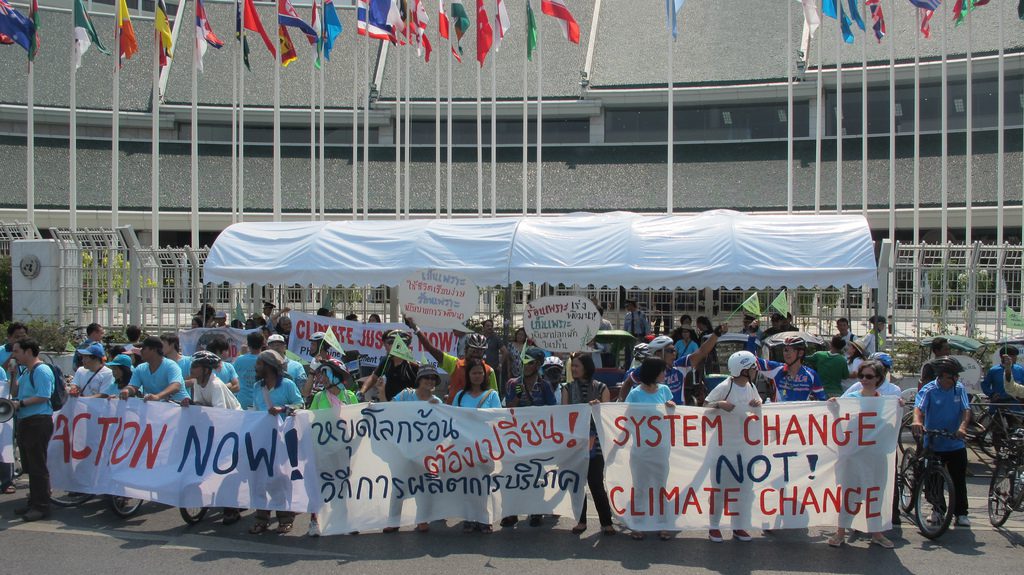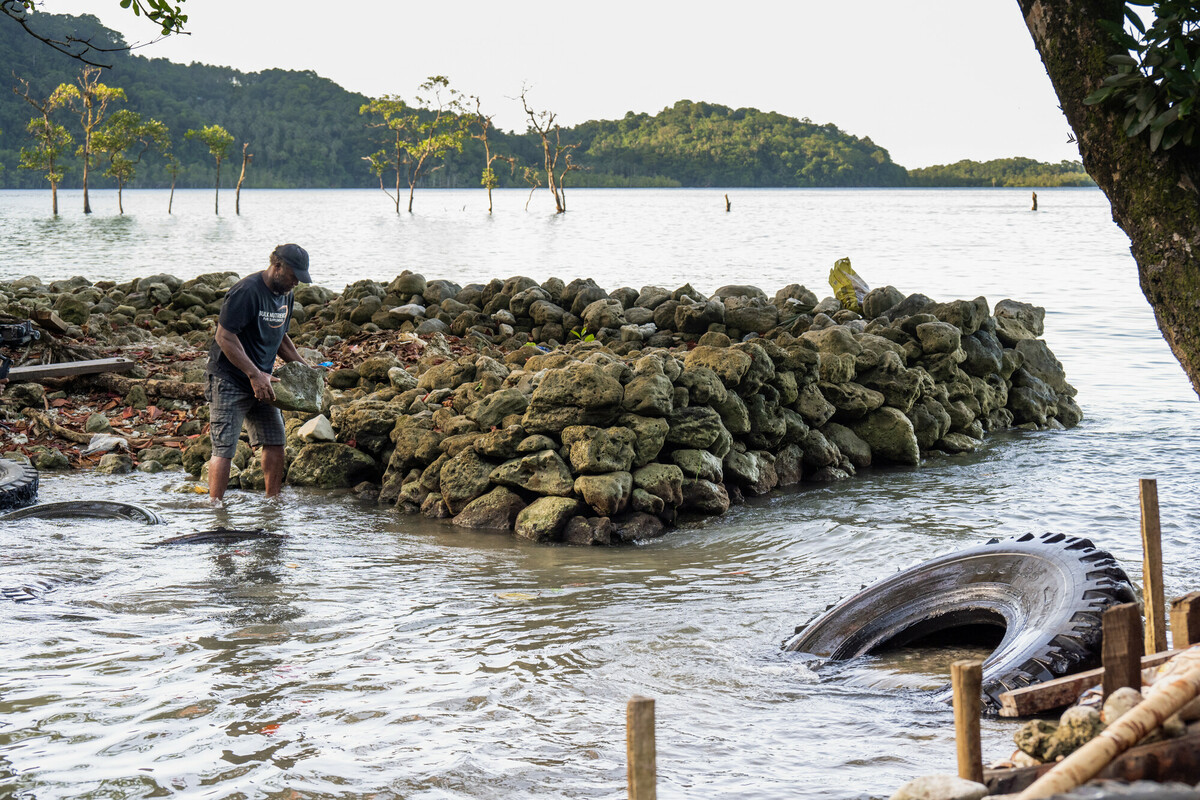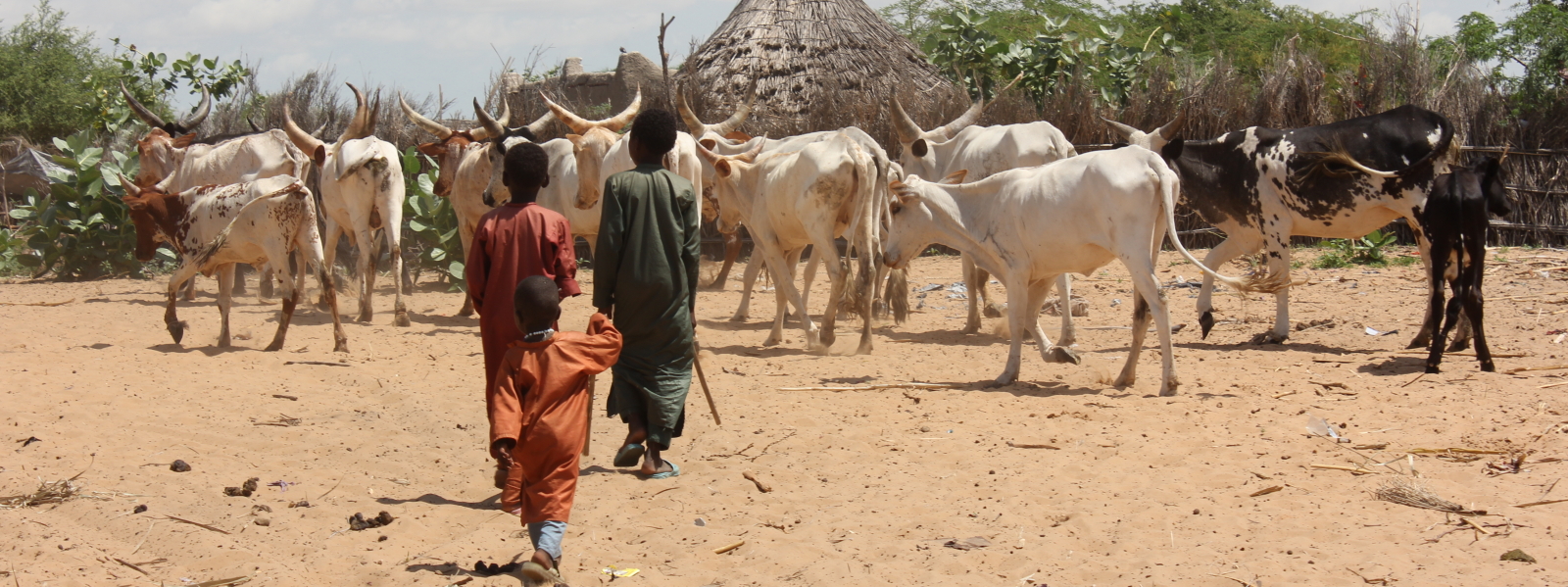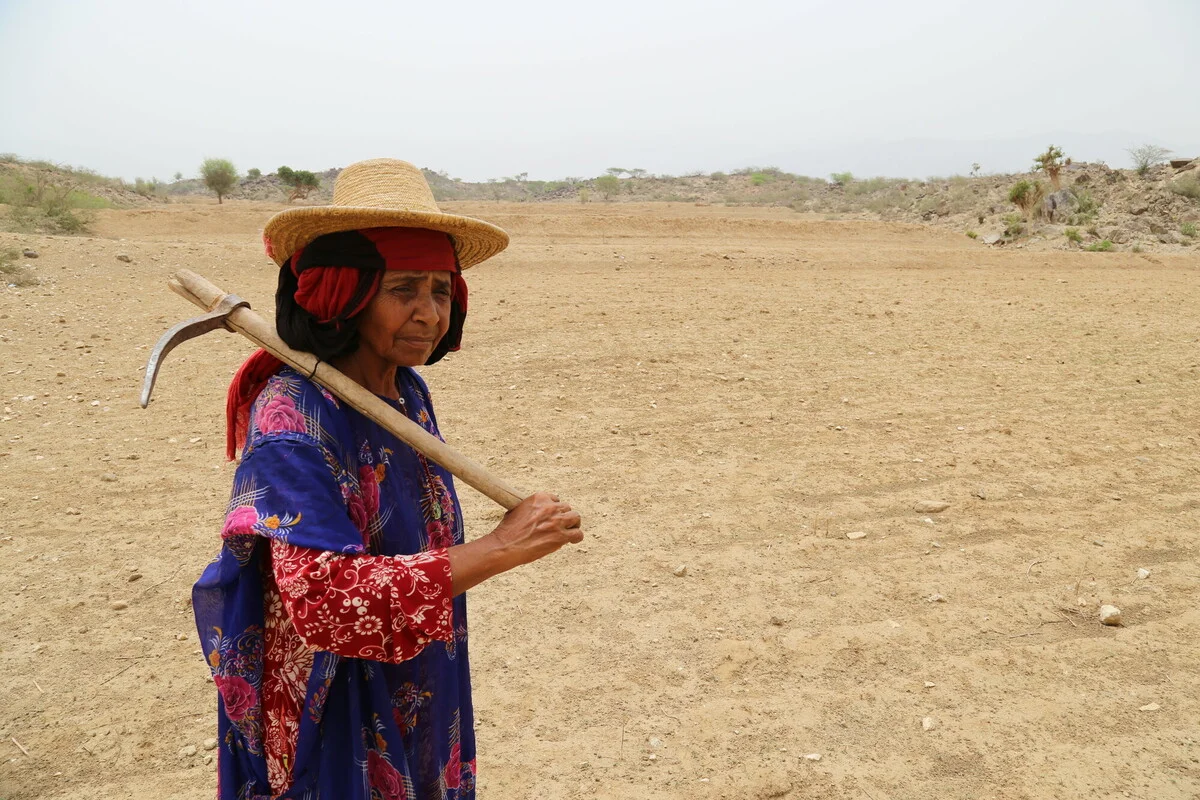Negotiators are in Bangkok for another round of UN climate talks (30 Aug – 5 Sep). This is an “intersessional” – a less formal round and lower profile event than the annual Conference of the Parties (COP). It is the second intersessional since COP17 in Durban (with one having been held in Bonn in May) and the last before COP18 in Doha in November/December.
Some notes on context
The meeting is occurring against a backdrop of record Arctic ice melt, recent flooding in the Philippines, Asam and other areas, recent drought in the US, and an ongoing food crisis in the Sahel. Some scientists, including notably James Hansen, have been asserting a stronger link between climate change and these weather-related disasters. Meanwhile, lead US negotiator Todd Stern created shockwaves a few weeks back by implying that the long-standing agreement to limit warming to 2 degrees, enshrined in the Copenhagen Accord, was harming progress in negotiations and should be suspended. While he later clarified these remarks as simply favoring a more “ground-up” approach to climate action, fear that the US is maneuvering to lower ambition and rewrite earlier agreements is now rife.
What are we hoping for?
COP17 in Durban ended with an agreement to launch negotiations towards a comprehensive climate treaty to apply to all countries, to be finalized by 2015 and come in to force by 2020. This agreement is known as the Durban Platform for Enhanced Action (Durban Platform or ADP for Short). While 2015 may feel like a lifetime away, all agree that there is considerable work to be done between now and then. One of the key lessons from the Copenhagen experience was the need for clear work-plans and to properly lay the ground for a full agreement by negotiating through the myriad of details before any final showdown.
So NGOs, including Oxfam, are pushing negotiators to work earnestly on formulating a credible plan, including clear timelines and milestones that can get us to “FAB” (Fair, Ambitions and Binding) treaty. COP18 in Doha must then agree clear objectives for each year between now and 2015. So while this particular meeting may feel relatively unimportant, the progress made in Bangkok across a number of crucial issues and sticking points, will determine either the success or failure of Doha and the momentum of global climate action.
So what are some of these details that we need progress on? And how are we fairing?
Equity
Put simply: “What is a fair distribution of the efforts to tackle climate change between countries?”
This is a particularly key area for Oxfam, given our focus on vulnerable communities and the disproportionate impact of climate change on poor people in developing countries.
The “Bali Action Plan” (the key outcome of COP13 in 2007 in Bali) was clear on the concept of “common but differentiated responsibilities and respective capacities”. (Put simply – We all have a role to play but the size of each country’s role depends on the extent to which it has caused the problem in the first place and its capacity to help resolve it. In other words, industrialized countries need to do more.) Indeed, “equity” was already a principle of the United Nations Framework Convention on Climate Change (UNFCCC) itself.
However, the Durban Platform, adopted last December, and still only a very brief statement of where we go next, is silent on equity. This lack of an effort-sharing agreement to guide the formulation of a comprehensive treaty is one of the biggest gaps that needs filling. Developing countries are concerned that hard-won equity principles will be brushed aside in the rush to secure a more ambitious and inclusive treaty.
So increasing understanding and consensus around the options for allocating fair shares of the global effort is a priority right now and a key part of the ADP work plan. As ideas on equity vary so widely, Oxfam has proposed establishing an “equity corridor”, which establishes some parameters (basically or range of equity indicators and principles) within which a political negotiation can take place. Nationally Appropriate Mitigation Actions (which have the catchy acronym NAMAs) are another part of this equity debate. As the name suggests, these are action plans appropriate to a particular country’s circumstances, and imply that countries may put in place a variety of different policies and actions to meet their share of the global effort.
Near-term ambition
Last December in Durban there was an important breakthrough, with governments agreeing to launch negotiations towards a comprehensive global climate treaty to apply to all countries. But there’s a problem – the treaty would not be finalized till 2015 and won’t actually come into force till 2020. And the science is clear – if we wait that long before beginning a serious transformation of our energy systems and drastically curbing greenhouse emissions, we have no hope of avoiding catastrophic climate impacts.
So a compromise was reached – to begin a work program on raising near-term ambition. In other words, to make sure we begin lifting our game long before the eventual treaty kicks in. But again, we face the problem of not enough clarity on equity / effort sharing. Developing countries (and Oxfam) are therefore insisting that discussions on near-term ambition take place in the context of the Bali Action Plan, and its existing principles on equity, while discussions on long-term effort sharing arrangements continue as part of advancing the Durban Platform.
Some of the possibilities being explored in the working group on near-term ambition are reducing short-lived climate forcers (particularly black carbon) and eliminating “super greenhouse gases” such as HFC-23 (Google them if you want to know more), along with removal of fossil fuel subsidies.
Legal Frameworks
By now you’ve heard many of us harping on about “Kyoto2” and why Australia needs to sign-up. With a new global climate treaty still years away, the Kyoto Protocol remains the only legally-binding agreement to cut greenhouse emissions. Phase one of Kyoto comes to an end this year. The continuation of the protocol, by way of a second commitment period, can provide the legal and political bridge to a new and more ambitious agreement.
The problem – Australia is yet to commit. Granted there are several issues to iron out – minimizing the carry-over of surplus emission permits into a second commitment period (which would undermine environmental integrity), the length of the second commitment period (the EU wants eight years but developing countries fear this would lock-in low ambition and want five), to name but two. But we’re pushing for Australia to follow the EU and other key actors in saying that they support, in principle, a Kyoto2. Even our Federal Opposition has given the green light. Could Australia be holding back an announcement as a bargaining chip? Perhaps. If so, we’re playing a high-risk game at a crucial point in the negotiations and it’s time we got off the fence.
Finance
Here we have a whole ‘nother aspect of climate negotiations and the UNFCCC process, closely linked to notions of equity and, for Oxfam, a critical area in terms of improving the lives and prospects of those worst impacted by climate change.
Part of the Copenhagen Accord – the flimsy and non-binding agreement forged at the end of the much-hyped COP15 – was a commitment by developing countries to provide new financial support to developing countries “approaching $30bn for the period 2010-2012”, with a “balanced allocation” across mitigation (curbing greenhouse emissions) and adaptation (adaptation to the now inevitable change and climate), rising to $100bn a year by 2020. This initial $30bn a year over three years was called Fast Start Finance.
To its credit, this is one area where Australia has performed quite well so far. We put in a fair share to the global goal of $30bn in Fast Start Finance. We also invested sensibly in a balance of projects (52% to adaptation projects, which Oxfam obviously regards as very important in terms of supporting wellbeing and livelihoods and providing a foundation for economic development), supported some of the most vulnerable countries and were transparent in our investments.
Other countries did not stand by their commitments. But more seriously, there is no good plan for mobilizing the $100bn a year by 2020. And there have been no standards on what counts as “additional”. Oxfam holds that additional means on top of the long-standing promise by developing countries to contribute 0.7% of national income to overseas aid. Why? Climate change is an additional burden for developing countries, requiring additional assistance. And with a sway towards relying more on private sources of finance, Oxfam is also pressuring to ensure that the bulk of funds must come from national budgets, as helping vulnerable communities adapt to climate change is not always going to be an attractive private investment opportunity.
COP17 in Durban saw the launch of the Green Climate Fund – intended as a central mechanism for transferring money for climate change mitigation and adaptation from the developed to the developing world. The Fund’s Board met for the first time last month, and elected Australia as one of two co-chairs. While the fund is getting down to work on such things as governance principles and how funds are to be distributed, the aforementioned challenge of mobilizing tens and ultimately hundreds of billions in funds remains. A charge on emission from international shipping fuels (bunkers) remains as one of the most promising “innovative” sources (i.e. new source of funds on top of contributions from national budgets and private sources). Oxfam is among those trying to keep up momentum towards a fair charge on shipping emissions, with a portion of revenue going to the Green Climate Fund.
So there you have it. There’s much I’ve missed out from this short summary but I hope this gives a glimpse of the wood through the trees and some idea of the state of international climate negotiations. By Thursday we’ll have an idea of how things played out in Bangkok and what shape we’re in as we head towards Doha.
Simon Bradshaw is the Climate Change Advocacy Coordinator for Oxfam Australia



